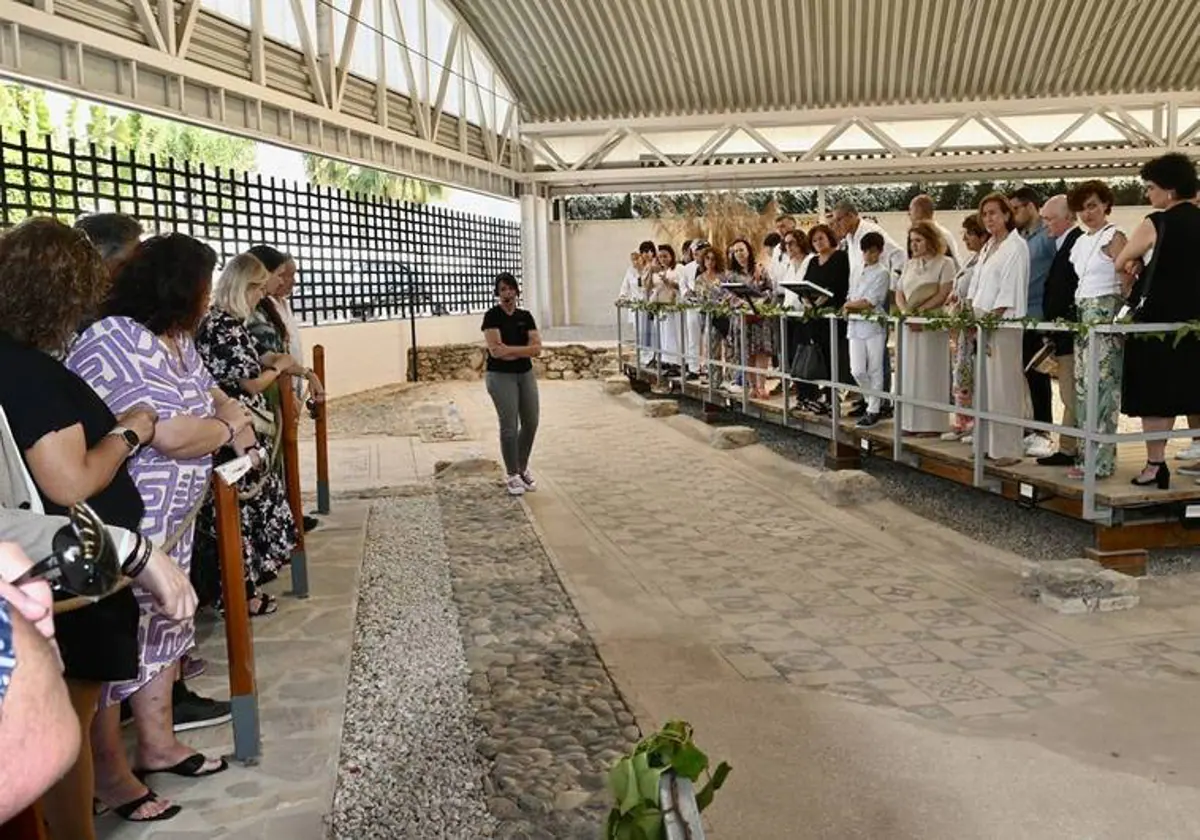Marbella’s unique mosaics inspire a meal fit for an emperor
The Firmana cultural association revealed the Romans’ gastronomic secrets and the importance of fish at the event
Joaquina Dueñas
Marbella
Martes, 9 de mayo 2023, 15:43
The Firmana cultural association organised a visit to Río Verde Roman Villa in Marbella, followed by a 'convivium' (a meal) in Puente Romano on Saturday 6 May. The event was led by Fernando Sánchez, chef of the Buchinger Wilhelmi Clinic, a partner in the event.
It was a meeting in which the gastronomic secrets that the town hides in its mosaics were revealed and when more than a hundred participans dined on red mullet like true emperors. The mosaics of the Río Verde Roman Villa in Marbella are "unique in the world" according to archaeologist Isabel Núñez of the Firmana cultural association.
"It is the only place in the world where a red mullet is graphically reflected," she says. She even points out that, although Apicius' recipe book "speaks of this species", no other mosaic in the world is known to include this figure.
Núñez pointed out that during Roman times "the red mullet was worth more than a slave. It cost 6,000 sesterces, while buying a slave cost 1,200". This fish "was destined for the upper classes, for emperors and their high officials or for families with money", she continued. And if hat wasn’t enough, Núñez pointed out that as a sign of social distinction, "the red mullet was left to die in front of the diner”.
"It was a scarce food that was found in the Mediterranean, very specific to the strip from Marbella to Estepona, as well as in areas of the Italian coast", the archaeologist added. It was “a very coveted fish, very red, small and very tasty, which was very important", she pointed out.
Garum
Saturday’s menu began with a 'gustatio' (appetiser) with a fermented apple drink, creamy handmade cheese with herbs and chives, Roman white garlic with pickles and amontillado wine, preserved morrillo tuna, garum and pine nuts.
The garum trade was the activity of the family of this villa located in what is now the Golden Mile, which, according to the findings, was very wealthy. Garum was also exclusive, as archaeologists have been able to confirm that one of the ingredients used to ferment this prized sauce made from fish was the juice of oysters which are also represented in the mosaic.
Just like the asparagus that made up the 'prima mensa' or first course, in this case, smoked with mousseline. They were chosen for the menu because "it was the Romans who introduced them to the Iberian Peninsula", Isabel pointed out.
As a main course the coveted grilled red mullet was served along with sprouted wheat. The meal ended with wine, honey and oil torrija.
The activity was sponsored by the chef José Andrés, who was on holiday in the town and is passionate about the town’s Roman heritage. He prepared a marinated prawn tempura with garum as a surprise for the guests.
